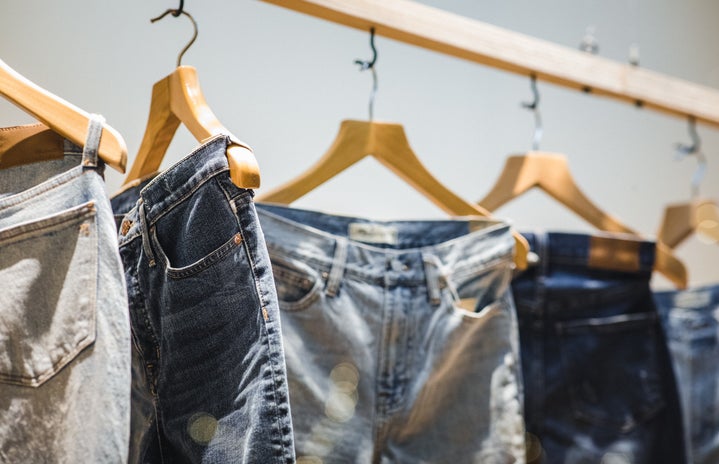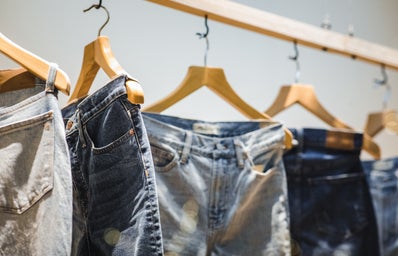Should you have to pay to return clothes?
We’ve all been there, a last-minute night out and you’ve absolutely nothing to wear. Never fear, next-day delivery is here. But have you ever wondered what happens to the clothes you bought, for the just-in-case moments and ended up returning it?
ASOS recently announced that they are going to be deducting £3.95 from refunds where less than £40 of an order was kept – premium subscribers will only need to keep £15 worth of an order before a deduction is made. Many retailers promote premium subscriptions to encourage loyalty among customers.
ASOS is not the first brand to start charging customers for online returns. PLT, Zara, Uniqlo, and Next already charged for their returns. For retailers, the idea is that if customers have to go into stores to return clothes, hopefully, they will pick up the odd impulse purchase when they’re there.
In comparison to returns in-store, online returns are a nuisance for retailers. Items have to be returned via courier before being inspected and prepared to be put out for re-sale, that is if the item is still in season. As a result, oftentimes, the clothes will be dumped.
The fashion industry is the third largest contributor to global greenhouse gases.
Nowadays, clothes are often made so cheaply that it’s not worth retailers’ time or money to resell them. Cheaper items of clothing are often made from the fossil fuel polyester.
Clothing can take up to 200 years to decompose. 100 billion garments are produced every year. For every five garments produced, three end up in landfills or incinerators. One truckload of clothing is sent to a landfill or burned every second.
5 billion pounds of waste is generated every year through returns. Online shopping generates 4.8 times more packaging waste than offline shopping and could produce an additional 10 percent of waste over the next decade.
The fashion industry emits 2-8 percent of greenhouse gas emissions and is on track to contribute 25 percent of the world’s carbon budget by 2050. 12 percent of online purchases were returned in Ireland in 2020.
There was a lot of pushback against ASOS’ decision to charge customers for returns, with many people feeling that if the sizing and quality of clothing were improved, there would be less need to return clothes.
ASOS first introduced free delivery and free returns for all UK customers in 2009. Over the following decade, numerous brands followed suit. It is now a trend we have become accustomed to.
Clothing hauls first emerged on YouTube in the 2010s with fast fashion brands such as Zara and H&M benefiting from the recession. Likewise, hauls of ultra-fast fashion brands such as Shein and Boohoo took off on TikTok during the COVID-19 pandemic. The pandemic boosted the number of online shopping sales to unprecedented levels. The rise of #hauls has led to increased shopping sprees as trends change rapidly and are hard to keep up with.
Trends feed on people’s innate desire to fit in. Many influencers have collaborations with fast fashion brands that their followers sell out. Social media trends can breed insecurity.
People often see the clothes on photoshopped models and want to look just like them, trying to fit in with society’s ideal body image, as opposed to seeing how clothes look on our real bodies.
The acts of “bracketing” (ordering extra sizes or colours), “wardrobing” (buying clothing or footwear to use for a short period), and “staging” (buying clothes to show off on social media) have changed the way people shop for clothes.
The rise of buy now, pay later schemes has led to shoppers placing orders for several products and trying them on before ultimately sending some back.
Yes, fast fashion is cheap, but who is paying for it?
93 percent of fashion brands don’t pay garment workers enough to live on with many facing unsafe working conditions.
We need to use social media as a tool to educate each other on sustainable fashion, and taking care of our clothing and our planet. We need to stop enabling fast fashion and ultra-fast fashion brands to control the way we buy our clothes.
Having to pay for online returns could slow down the rate at which we think of clothing as disposable. There are plenty of initiatives we can follow to improve our relationship with clothes.
The website Good On You rates fashion brands based on their sustainability.
Remake our World’s #NoNewClothes campaign challenges people to not buy any new clothes for 90 days.
It’s time we all took a leaf out of Lizzie McGuire’s book and became outfit repeaters!


